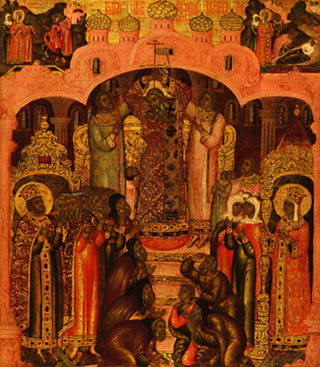The Exaltation of the Holy Cross
Feast Day September 14

The one symbol most often identified with Jesus and his Church is the cross.
Today we celebrate The Exaltation of the Holy Cross. This feast traces its beginning to Jerusalem and the dedication of the church built on the site of Mount Calvary in 335. But the meaning of the cross is deeper than any city, any celebration, any building. The cross is a sign of suffering, a sign of human cruelty at its worst. But by Christ’s love shown in the Paschal Mystery, it has become the sign of triumph and victory, the sign of God, who is love itself.

Believers have always looked to the cross in times of suffering. People in concentration camps, in prisons, in hospitals, in any place of suffering and loneliness, have been known to draw, trace, or form crosses and focus their eyes and hearts on them. The cross does not explain pain and misery. It does not give us any easy answers. But it does help us to see our lives united with Christ’s.
We often make the Sign of the Cross over ourselves. We make it before prayer to help fix our minds and hearts on God. We make it after prayer, hoping to stay close to God. In trials and temptations, the cross is a sign of strength and protection. The cross is the sign of the fullness of life that is ours. At Baptism, too, the Sign of the Cross is used; the priest, parents, and godparents make the sign on the forehead of the child. A sign made on the forehead is a sign of belonging. By the Sign of the Cross in Baptism, Jesus takes us as his own in a unique way. Today, let us look to the cross often. Let us make the Sign of the Cross and realize we bring our whole selves to God—our minds, souls, bodies, wills, thoughts, hearts—everything we are and will become.
O cross, you are the glorious sign of our victory.
Through your power may we share in the triumph of Christ Jesus.
(Prayer of Christians)

from Saints and Feast Days, by Sisters of Notre Dame of Chardon, Ohio
Image credit: Feast of the Cross by Gury Nikitin, 1680. Public Domain via Wikimedia.

